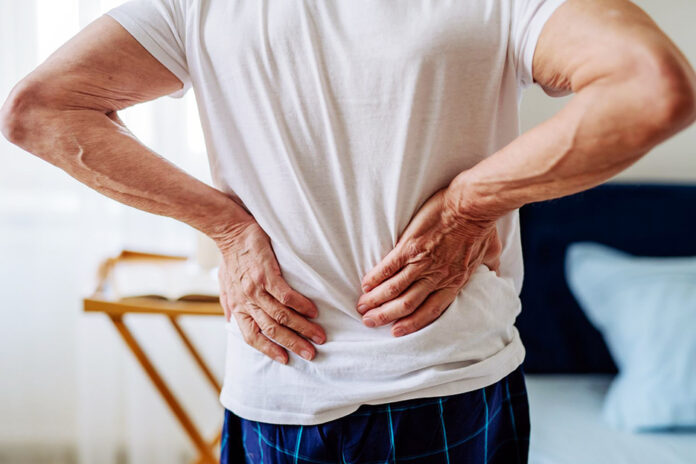You might have sprained it while working in the yard or cleaning house. Or your back might hurt from an old sports injury or a chronic condition such as arthritis. You probably have lower back pain. It affects more than 80% of people at some point. And it’s the most common cause of job-related disability in the U.S. While medicine can help, you may also find relief with these simple steps.
Maintain good posture
This helps ease the pressure on your lower back. You can use tape, straps, or stretchy bands to help keep your spine in alignment. Aim to keep your head centered over your pelvis. Don’t slouch your shoulders or crane your chin forward.
If you work in front of a screen, rest your arms evenly on the table or desk, and keep your eyes level with the top of the screen. Get up from your chair and stretch and walk regularly.
Keep moving, keep stretching
Scared to get back to your exercise routine? It makes sense. After all, you want to be careful and avoid things that’ll make you feel worse. But did you know that your chronic back pain will improve if you get moving? Exercise keeps your muscles strong and prevents spasms.
Try to keep up with your usual level of daily activity and movement. It can be a brisk 30-minute walk or circling the block with your dog. Aim to get on your feet at least three times a week.
Apply ice and heat
There isn’t a lot of proof that ice will ease your symptoms, but some people say it helps. Want to see if it’ll work for you? Apply ice to your lower back at least three times a day — in the morning, after work or school, and then again before bedtime. Wrap the ice or cold pack in a towel to protect your skin. Don’t leave it on longer than 15-20 minutes at a time.
Heat does help to ease low back pain. Moist heat — baths, showers, and hot packs — tends to work better. But you can try an electric heating pad. Apply it to your sore back for 15 to 20 minutes at a time. Set a timer so you don’t fall asleep with it on. Always set the pad on low or medium — never high. It can cause serious burns.
Rub on medicated creams
Skin creams, salves, ointments, or patches may help when your back feels stiff, sore, and tense. Many of these products contain ingredients such as menthol, camphor, or lidocaine that can cool, heat, or numb the affected area.
Put on creams right where you hurt. Ask someone to apply it if you have trouble reaching the spot.
Keep a healthy weight
Shedding extra pounds lightens the load on your lower back. If you need help, ask your doctor for advice on a diet and exercise plan that may work best for you.
Find a physical therapist
This can make a big difference, especially if you’ve had the pain for more than 4-6 weeks. With techniques like electrical stimulation, ultrasound, heat, and muscle relaxation, these specialists help you get more mobile and flexible.
They can also teach you exercises to do on your own to keep your symptoms from coming back. These can help your posture and keep your back and abdominal muscles (your core) healthy.
Try manipulation or massage
Manipulation is when physical therapists or other health professionals, like chiropractors, use different techniques to move your spine through its full range of movement. Studies show that if you’ve had back pain for more than a month, this can be a safe and effective treatment. But you may need several sessions.
Massage may provide relief, too. One study found that people who got either structural massage (soft-tissue techniques to address problems with your muscles or skeleton) or relaxation massage (stroking, kneading, or circular motions to help you relax) saw improved symptoms after 10 weeks.
They were able to get through their daily activities more easily and used less pain medication than those who just got regular care. If you’re interested in trying manipulation or massage, talk to your doctor about finding a qualified health professional or massage therapist.
Source: webmd.com









